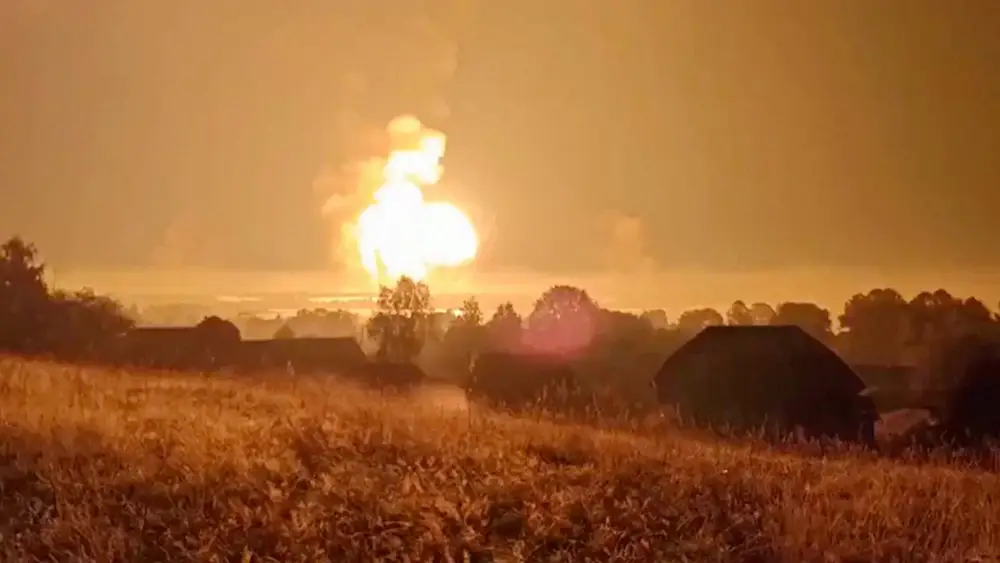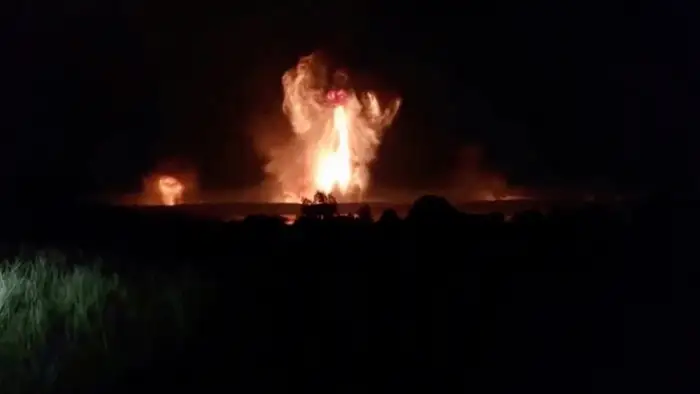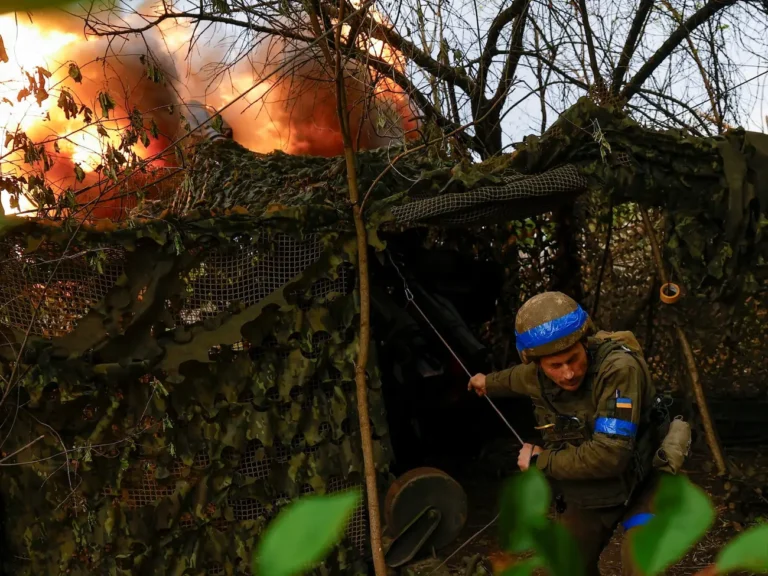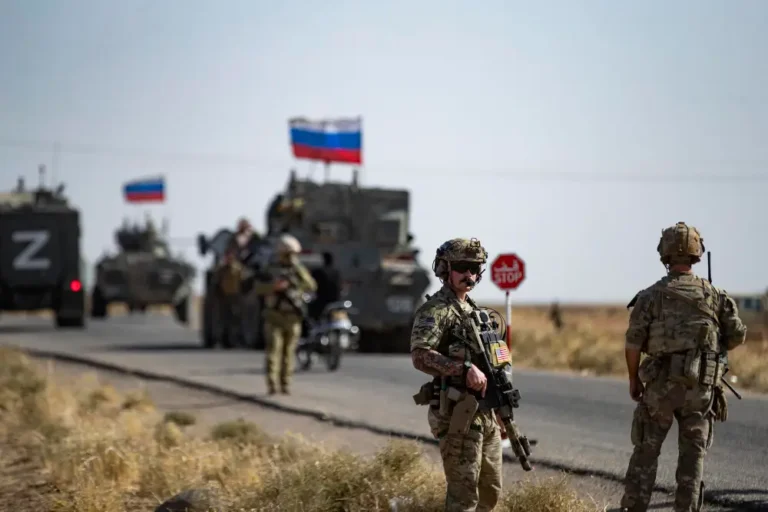Ukraine’s long-range strikes on Russian ammo depots aim to starve its bombing campaign

Flames rise during an explosion in Toropets, Russia in this screen grab obtained from a social media video released on September 18.
Ukrainian long-range drones struck an ammunition depot inside Russia this week, triggering fireballs as bombs and missiles exploded in the latest attack targeting Moscow’s key military facilities deep within its borders.
Images captured widespread damage and fires at the site, but the long-term implications of the strike overnight on Tuesday are unclear. Analysts suggested that the incident — and future ones like it — could put Russia in a serious logistics bind by forcing it to disperse more ammunition and store it farther from Russia’s war against Ukraine.
A source in the Security Service of Ukraine told B-17 on Wednesday that the drones targeted a large warehouse in the town of Toropets, in Russia’s western Tver region, about 300 miles from the Ukrainian border. The source spoke on condition of anonymity to discuss sensitive operations.
The source said the warehouse, which stored ballistic missiles and artillery ammunition, was destroyed in the attack, reducing Russia’s ability to carry out deadly strikes on Ukrainian cities.
Video footage captured that night showed massive fireballs erupting from the facility, and next-day satellite imagery captured plumes of smoke covering the area.

A mushroom cloud rises after an explosion in Toropets in this screen grab obtained from a social media video released on September 18.
A former Ukrainian military officer wrote on social media that the scale of the attack was so large that Russia wouldn’t be able to replace the munitions it lost very quickly.
Conflict analysts at the Institute for the Study of War think tank said future Ukrainian strikes on weapons facilities deep within Russia, like the attack in Toropets, would put pressure on Moscow that extends well beyond the immediate impact of any single attack. Moscow’s strategy depends upon repeated and large missile and bomb attacks.
For instance, past strike campaigns against Russian ammunition depots in occupied Ukrainian territory forced Russia to disperse weaponry to less vulnerable locations. This complicated Moscow’s logistics at the time.
“Repeated strikes against ammunition depots within Russia that cause similar levels of damage to the strike in Toropets may force a similar decision point on the Russian military command to reorganize and disperse support and logistics systems within Russia to mitigate the impact of such strikes,” the ISW analysts wrote in an assessment published Wednesday night.

The aftermath of the Ukrainian strike in Toropets.
The SBU source said Ukraine is indeed planning similar attacks to the one at Toropets on other Russian military facilities, such as sites where weapons are produced or staged en route to Ukraine.
Ukraine is prohibited from using its arsenal of powerful, Western-provided long-range missiles to strike targets inside Russia. To work around these limitations, Kyiv has relied heavily on domestically produced attack drones in a campaign against Moscow’s military and energy facilities.
Ukrainian officials have long noted that the Western restrictions interfere with their ability to fight Russia effectively, but Kyiv’s persistent efforts to remove all limitations have been unsuccessful.
“Russian forces may not have addressed vulnerabilities at many logistics facilities within Russia due to the sanctuary space that restrictions on Ukraine’s use of Western-provided weapons have generated, although the Toropets facility is not within range of Western systems fired from Ukraine,” the ISW analysts said.
“The lifting of restrictions on the use of Western systems and the continued development of Ukraine’s own long-range strike capabilities may allow Ukrainian forces to more effectively exploit such Russian vulnerabilities,” the analysts added.






